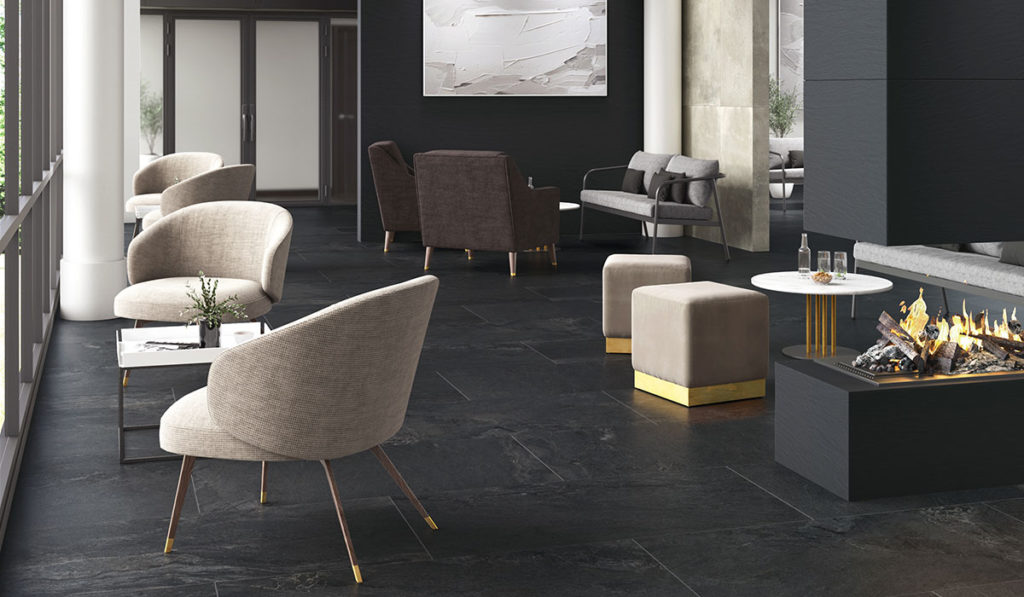
In Defense of Porcelain: an Interview with Lindsey Waldrep of Crossville Tile
Lindsey Waldrep, VP of Marketing at Crossville Tile, knows a thing or two about porcelain tile. She knows where it comes from. How the raw materials are extracted. How it’s installed. How it performs. How it compares to other products in terms of life-cycle assessments, re-introduction into the product stream, and, when necessary, permanent disposal. She knows that, with the right kind of crushing and grinding apparatus, porcelain toilets can be recycled as raw materials for new tile. She knows that new technologies have opened horizons for aesthetic appeal and slip resistance. She knows it’s resilient, not only in terms of life-span under high use, but also from a manufacturing perspective, with local sourcing options that enable it to do an end around the supply-chain logjams that presently beset many other flooring products.
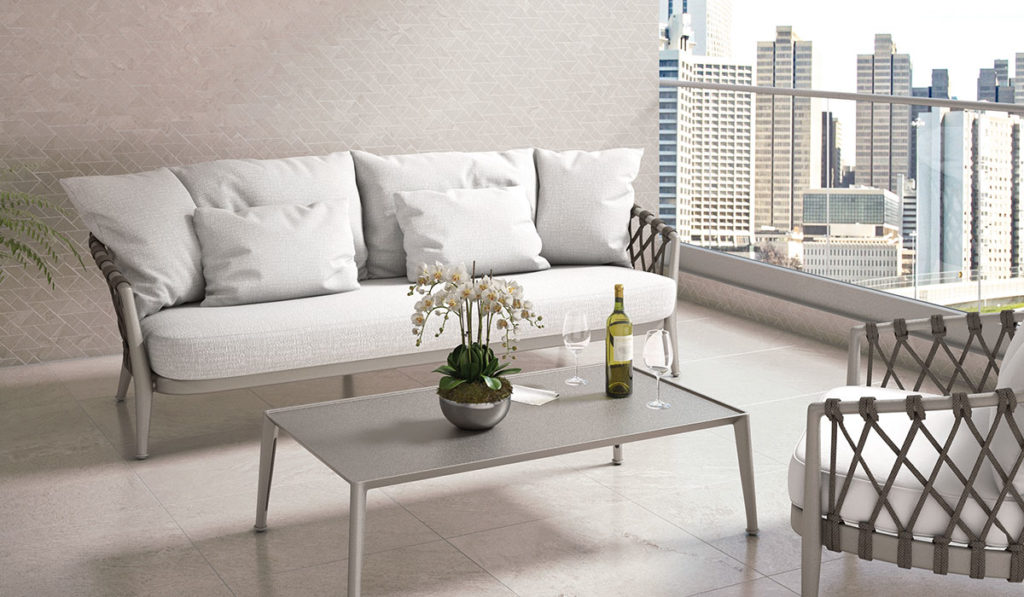
Porcelain tile from Crossville’s forthcoming Owen Stone collection
See. I told you she knows a lot.
With a backdrop of the success of Crossville Tile’s Portugal collection, and in anticipation of the forthcoming Owen Stone collection, Lindsey and I spoke about porcelain tile—a conversation that engaged what might be termed the usual suspects of installation, performance, appropriate vs. less appropriate applications, aesthetics, price, and sustainability, but also took up the ubiquity of plastic bags in Morocco, an imagined alliance between civic entities and manufacturers for an improved way to pave roads, and what is to be done about ice.
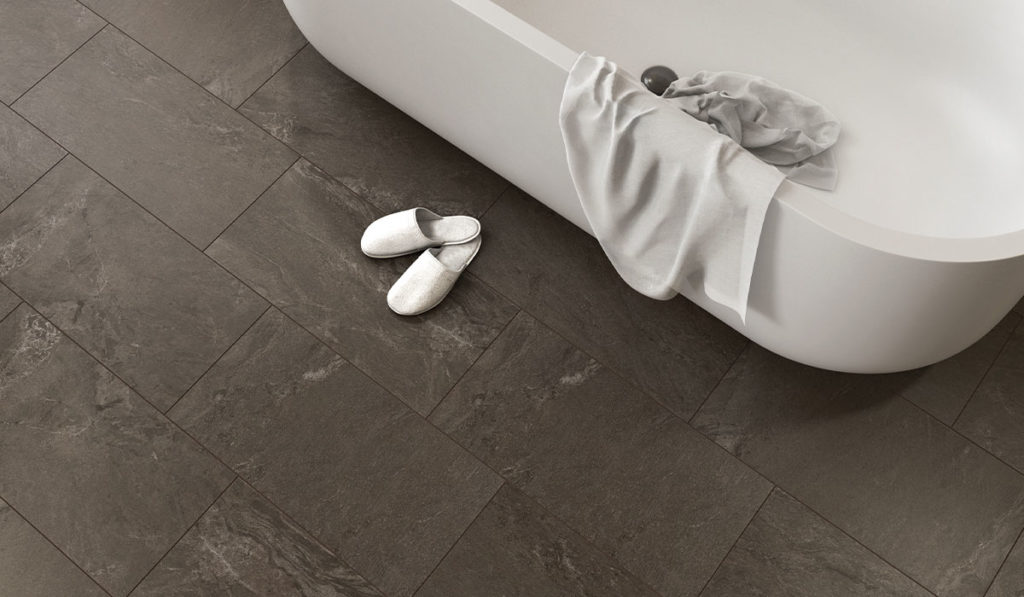
An image of a bathroom with Crossville Tile’s Portugal collection: porcelain tile’s density makes it ideal for water-resistant applications
Porcelain vs. Ceramic
3rings: A question for the ages and one which I’ve researched various times, but never entirely gotten a satisfying answer for. I think the whole world would like to know: what’s the difference between ceramic and porcelain?
Lindsey: What do you think it is?
3rings: Well I haven’t gotten that granular with it, but in general it’s a different type of clay… the clay for porcelain makes it more durable, less porous… which has a tradeoff in expense I imagine.
Lindsey: It does. You know it’s a different density that can be fired at a higher temperature to create a decreased porosity product. It’s like after college we all bought cheap Wal Mart stoneware plates and after a while you started to see gray scratch marks on them from your knife and little fissures, and then you have your grandmother’s porcelain which has lasted two or three generations. I would say floor tile can go on the wall, but wall tile can’t go on the floor. A lot of wall tile is ceramic because it keeps costs down. I love the encaustic cement tile which is a different type of ceramic and it’s beautiful, but it just isn’t as durable.
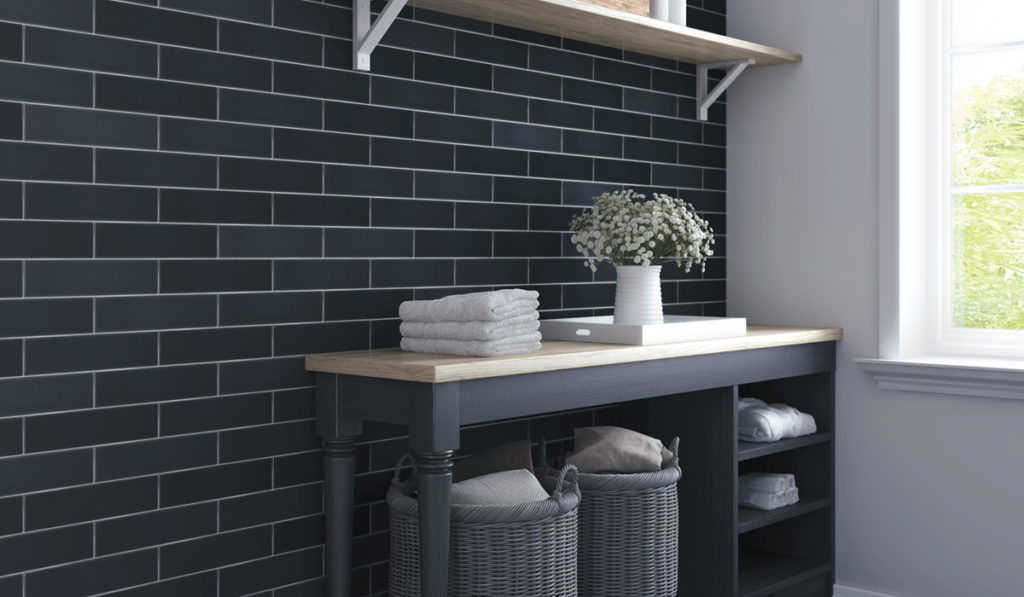
Ceramic tile from Crossville Tile’s Handwritten collection. Beautiful, but not as durable as porcelain, so best left on the wall.
Porcelain vs. Natural Stone
3rings: Does the durability of porcelain compare to the durability of natural stone products?
Lindsey: In some ways it’s more durable. Because all stone is not created equal. Soapstone and limestone will wear more rapidly, especially outdoors; slate will flake off. And some stone can be easily etched by acid, for example white marble and milk do not go together. Some can more easily be chipped and stained if not sealed properly. Here’s another thing: for those who brush their teeth in the shower, if you’re using Aim or one of those green or blue toothpastes or a green shower gel, it’s gonna stain your marble if it’s not properly sealed. Also brass or copper fixtures that have begun to oxidize may leech that greenish tone. That can stain your marble too. But it won’t stain porcelain. So if you can get the beauty of natural stone with greater durability that’s impervious to staining, why wouldn’t you?
3rings: It’s also less extractive or less damaging to the environment at the source of the raw materials.
Lindsey: Once that piece of stone is gone, it’s gone forever. In certain parts of Italy there are whole sides of mountains carved out of Carrara.
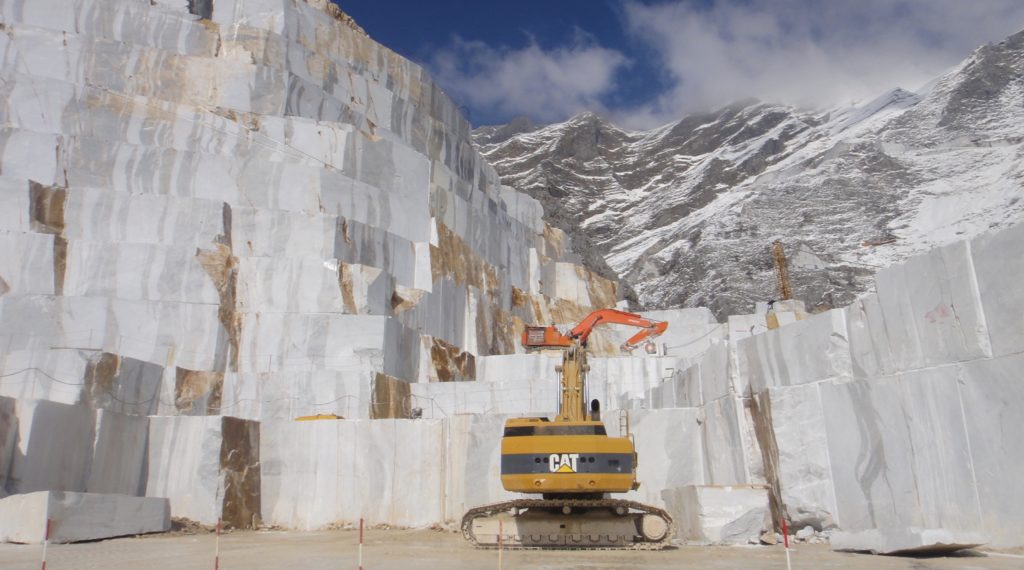
A marble quarry in Carrara, Italy. “Once that stone is gone it’s gone forever.”
Local Sourcing
3rings: Compared to other materials you may be mining, is porcelain clay more common and easier to find?
Lindsey: There’s a strip for porcelain clay that goes from Kentucky through the Carolinas. That’s why there are lots of tile manufacturers in the Appalachian foothills. Generally, it all comes from within 500 miles of our plant, whereas a product like LVT, a lot of it comes from overseas and they’re facing supply chain issues. So whether it’s competitive porcelain products that are made in Europe or flooring products that are made globally, it’s been tough to source them. Architects and designers are going back to sourcing from brands that they know they can get materials from. This has benefited a company like Crossville, who manufactures 85% of what they sell right here in Tennessee.
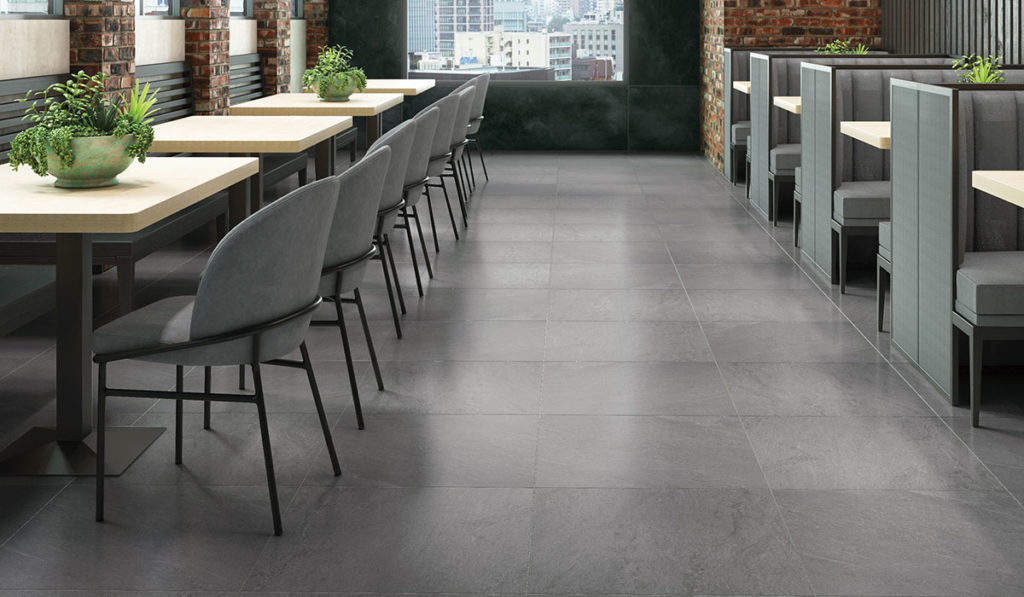
Owen Stone. Versatile and beautiful with the reliability of local sourcing.
Sustainability
3rings: That makes sense and it’s also a good segue for talking about sustainability because I think it’s one way that porcelain products potentially have a lighter carbon footprint, that we’re not relying on this overseas supply chain and the transportation costs, which include fossil fuel use.
Lindsey: Sustainability is coming back to the forefront because of new initiatives in life-cycle assessment. We’re seeing that plastic-based materials are not surviving in the building environment as long as originally touted. So life-cycle assessment, health product declarations, environmental declarations… all of these are showcasing porcelain in a very positive light for how it can contribute to a project in terms of durability and life cycle directly, but also indirectly since it doesn’t have VOCs—none of those products we use to install have those chemicals in it, so overall as a system it contributes to LEED points and other metrics to measure sustainability.
3rings: I’m glad we’re talking about this because it’s sort of taken for granted that manufacturers need to say something about how they’re sensitive to these concerns. Sometimes I feel like there’s no substance to some of these claims. Like it’s just lip service and 20-dollar words and catch phrases.
Lindsey: We use post-industrial waste in the majority of our products. We recycle all the tile we fire that’s not acceptable. And we also recycle Toto toilets from their Morrow, Georgia plant to use in our tile. We have a unique process because of our contacts with the mining industry for specialized crushers and grinders to be able to grind up something as dense as porcelain. This is an advantage compared to plastic-based products because, while they may contain recycled material, they can’t always be recycled back into the product stream.
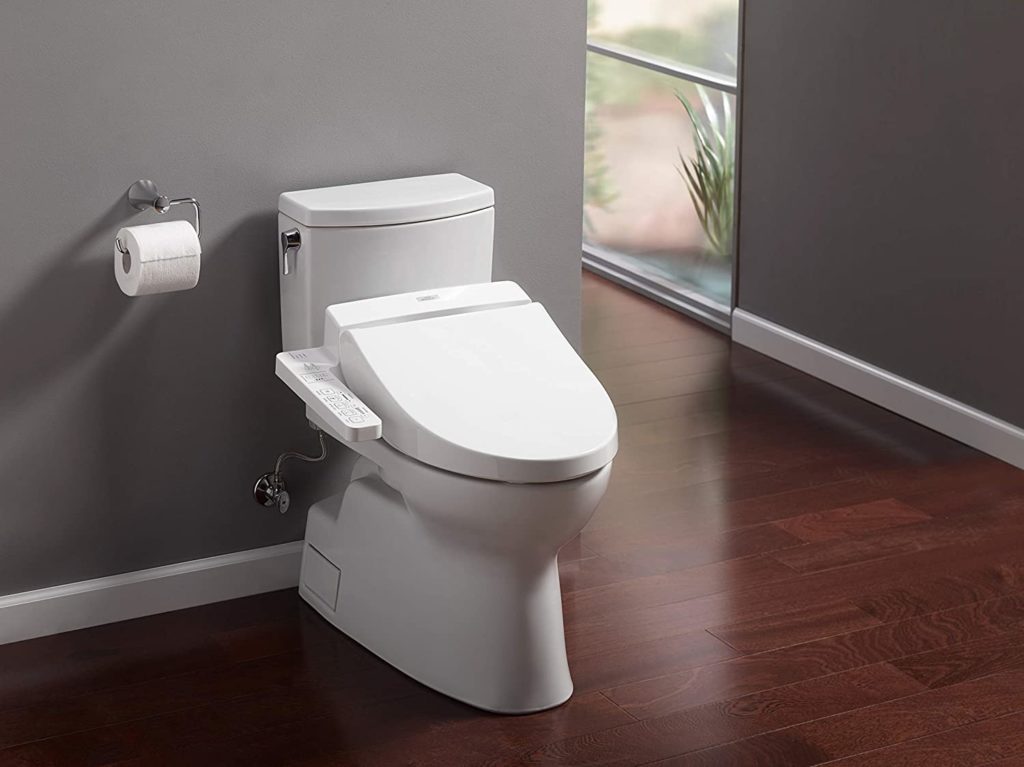
This Toto toilet may get a second life as raw material in your porcelain tile.
3rings: It’s admirable that these companies have figured out ways to re-use these plastic-based materials, like PET, but it kind of begs the question, it’s still plastic, right? I mean. It’s not the answer. Obviously, I don’t know what the answer is, but we’re still creating this stuff and we still don’t have a way to dispose of it.
Lindsey: And we’re very lucky here because when you travel to emerging countries that don’t have the waste pickup that we have, but yet they’ve started to have plastic bags and plastic bottles in their economy, there’s litter everywhere. When you’re standing in,say, Morocco, between cities, there’s this stream of plastic bags floating in the breeze because they don’t have that level of infrastructure to handle the increased waste.
3rings: That’s kind of a bleak picture. It reminds me of WALL-E and that vision of being over-run by all the waste we create.

WALL-E‘s apocalyptic landscape: towering structures of plastic and trash
Lindsey: I think that in a consumer-driven culture some of it can come down to personal responsibility. We should all be more thoughtful, and it’s the due diligence of manufacturers and the design community to select appropriate materials to reduce waste, reduce environmental impact, reduce impacts on the health and wellness of the inhabitants and the users of the space, and that’s probably the biggest reason why I’m very pro-tile.

An outdoor application of porcelain tile from the Portugal collection: “I’m not in the business of over-selling, because porcelain tile sells itself.”
Indoor/Outdoor
3rings: Speaking of the issue of preserving healthy spaces, whether indoors or out, how does porcelain tile figure into the push for biophilia that we’ve seen over the past couple of years… this appreciation for the healthful aspects of nature and figuring out ways to incorporate more natural environments into our living space?
Lindsey: You’re mentioning the interest in blurring interior and exterior and increasing our attention to being outdoors, but have we thought about how our products contribute to the health and wellness of the outdoors? With tile I think it’s kind of a one-two punch in that it contributes on both ends. We were talking about how porcelain is less pollutive and easier to re-integrate into the product stream, but, yes, it also can help blur the line between indoor and outdoor spaces. Specifically, with the emergence of highly slip-resistant finishes, tile is the one product, or perhaps also concrete, that you can take from indoors to out and create a completely seamless space. This blurring of interior and exterior spaces through your surfacing material is contributing to what we’re seeing—this rapid rise of porcelain tile.
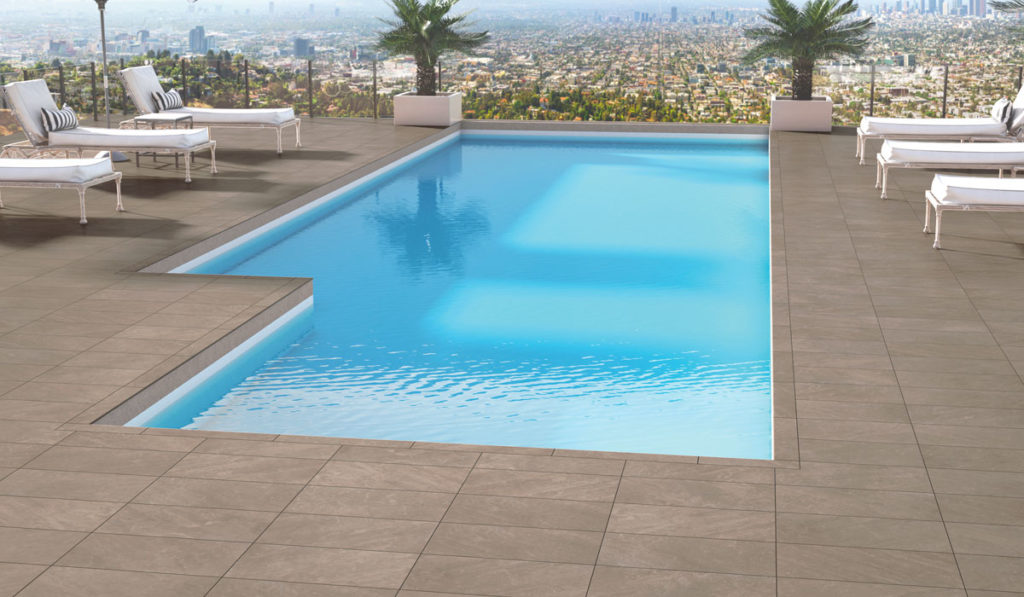
From the Portugal collection. New slip-resistant finishes have expanded the use of porcelain in wet applications.
3rings: I’m wondering… I’m in Colorado, and here we just don’t use tile in exterior applications because it can’t withstand the freeze-thaw cycle. Also, my experience is that it can be incredibly slippery. You talked about these newer products with increased slip resistance but what about the build-up of ice? Or just the degrading of the material with freezing and thawing?
Lindsey: Well. Porcelain can’t do anything about ice. I guess that would be on the user to maintain or use an ice melt product, but porcelain tile can withstand what you’re describing. Shoveling snow off it won’t damage it in any way, neither will a snowblower, and porcelain is so dense that water can’t get into it and crack it apart. Even natural stone has fissures and pores in it so unless it’s sealed up water can get in and crack it apart. You can use porcelain for both horizontal and vertical applications in very cold temperatures. Obviously, it has to be installed properly, but it’s really stable… much more so than natural stone.
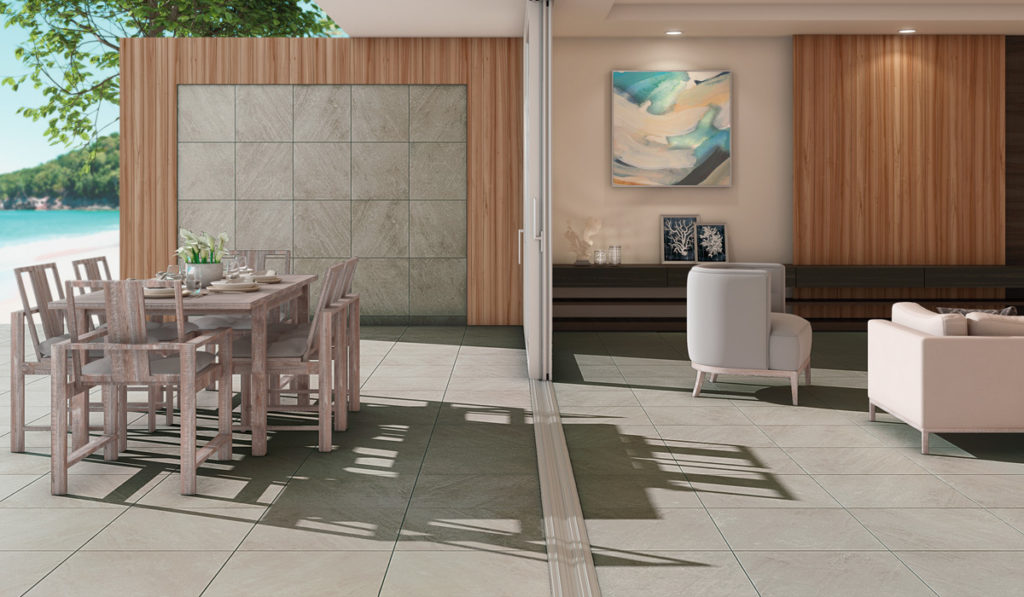
When properly installed, porcelain tile enables a seamless transition between indoors and out.
Crossville Tile’s Portugal and Owen Stone collections are currently available. Both are appropriate for interior and exterior applications. The exterior tiles feature finishes that increase the coefficient of friction without changing the look, thus blurring the boundary between indoors and out. Owen Stone also offers a new leathered finish for “a buttery, cashmere-like feel that is unique to Crossville—a first for porcelain tile.” Both collections come in a variety of dimensions and frame profiles. Find out more at Crossville Tile.
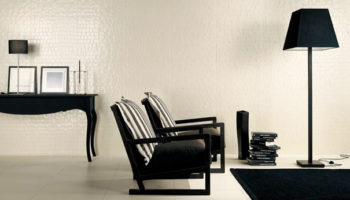

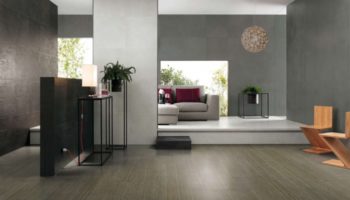

Leave a Reply